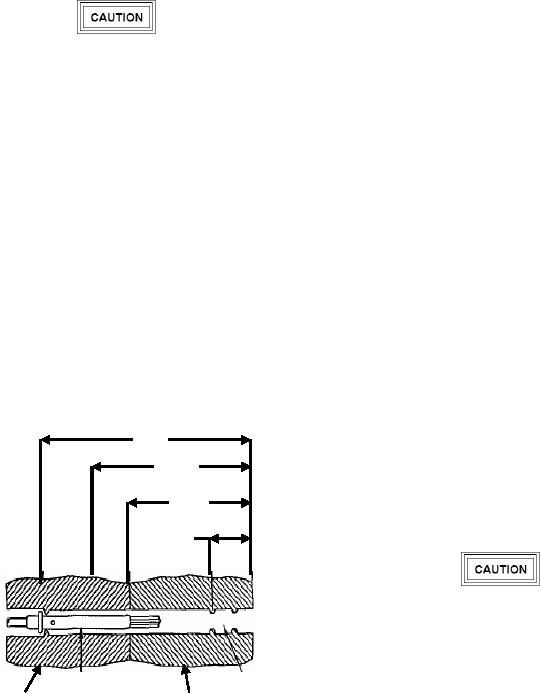
NAVAIR 01-1A-505-3
TO 1-1A-14-3
TM 1-1500-323-24-3
012 02
Page 15
c. Gently insert removal tool into cavity in
about l/16 inch units, releasing tool after each unit if
resistance is felt.
NOTE
Wire strands may be encountered at any
point up to 5/16 inch of tool insertion. It is
Rotating removal tool works splayed wire
important not to jam any strands of wire up
strands into slot of tool, allowing too1 to
to this point.
pass.
Withdraw removal tool anytime during
Removal tool may be blocked at rear of
insertion when it cannot be advanced into
contact by plastic insert or additional strands
connector using these procedures.
of broken wire.
Inspect tool tip for nicks, cracks,
d. If resistance is felt before removal tool
mushrooming, and other damage that will
reaches back end of contact, withdraw tool slightly,
prevent functioning. Replace removal tool
rotate about l/6 of a turn, and reinsert tool. Repeat
and repeat procedure, if required.
rotating and insertion procedure until tool passes with
minimum additional force to 5/16 inch depth back end
NOTE
of contact (Figure 22).
Refer to Figure 21 for approximate
e. Wiggle removal tool gently to help it into
dimensions of a size 22 contact and cavity.
insert bore and over back of contact. Additional
The dimensions in this procedure are based
rotation may be required if broken strands are
on a size 22 contact.
encountered.
f. Continue insertion of removal tool until
1/2 In
positive stop is felt at about l/2 inch depth.
3/8 In
g. Exert axial pressure on engaging end of
5/16 In
contact, using appropriate pin or socket as pusher. If
contact does not move, seat removal tool more firmly.
1/8 In
When removing broken wire contacts ensure
wire sealing grommet is not damaged. A
new connector must be installed (Paragraph
43) if a broken wire contact cannot be
Contact
Seal Area
removed.
Wire Barrel
Plastic
Resilient
Rear Insert
Retaining
h. Push contact completely out of rear of
connector before disengaging removal tool (Figure
Insert
23).
Figure 21. Typical Connector Dimensions

